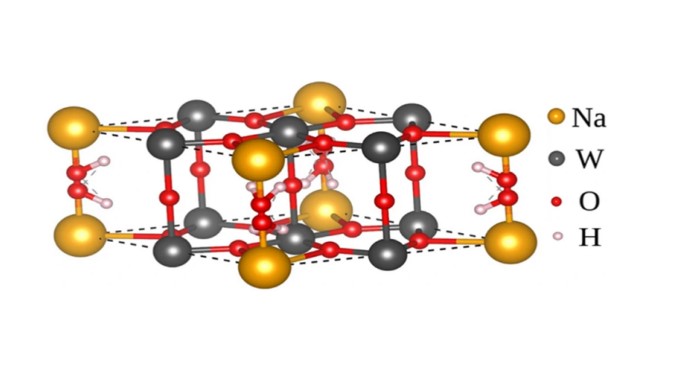


Bronzes are intercalation compounds, which involve the insertion of atoms into host material structures without significantly altering the original structure (image: CDMF)
Published on 06/20/2025
Agência FAPESP* – Researchers associated with the Center for Development of Functional Materials (CDMF) have applied a new synthesis route, using only precipitation in an acidic aqueous solution, to obtain sodium-tungsten bronze nanorods. The material could have several applications, including use in electrochromic windows, which are devices that can control brightness and climate in enclosed spaces by making the glass lighter or darker.
The technique, described in the Journal of Solid State Electrochemistry, proved to be fast, simple and low in electricity consumption. In addition, it does not require sophisticated equipment, which the authors say is an advantage over other methods.
“Bronzes are intercalation compounds, they involve the insertion of atoms into the structures of host materials without significantly altering the original structure,” explains Tiago Almeida Martins, first author of the article and researcher at the CDMF – a FAPESP Research, Innovation and Dissemination Center (RIDC) based at the Federal University of São Carlos (UFSCar).
In this case, the host material was tungsten trioxide with a hexagonal crystal structure. The atom inserted into its structure was sodium. In addition to the synthesis, the study tested the heat treatment of one of the synthesized samples, which was heated to 300 °C for two hours. The aim was to remove some of the structural water, which increased the electrochromic efficiency of the material.
“In the future, the objective will be to optimize the size and morphologies of the sodium tungsten bronze nanoparticles to increase their potential for use in areas such as smart window technology, energy storage and advanced electronic devices,” says Martins.
The article “Bronze sodium tungsten precipitation synthesis and lithium intercalation” can be read at: link.springer.com/article/10.1007/s10008-024-06110-2.
* With information from the CDMF
Source: https://agencia.fapesp.br/55125